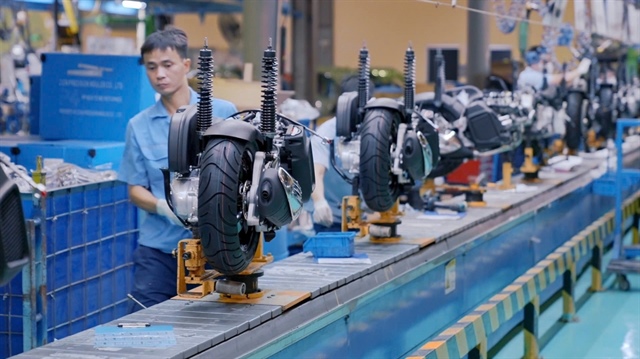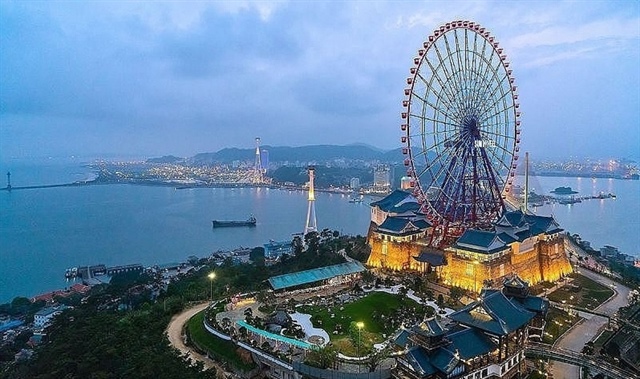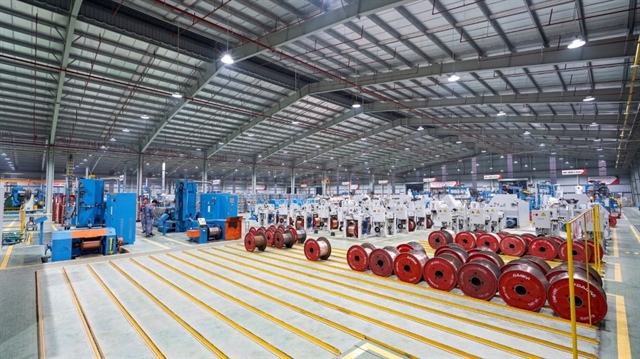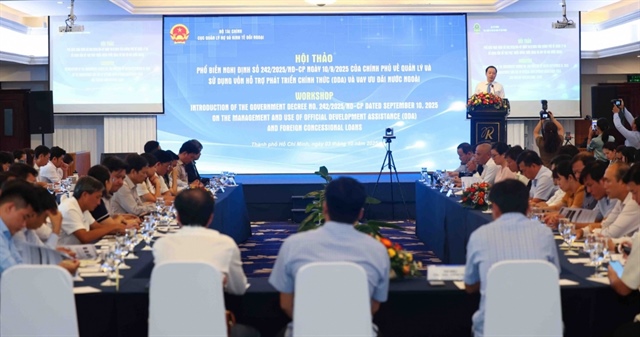Dak Nong offers immense potential
Dak Nong offers immense potential
As the southwest gateway to Vietnam’s Central Highlands, Dak Nong plays a crucial role in promoting trade between the Central Highlands and those in the southern key economic zone and south-central coastal provinces.
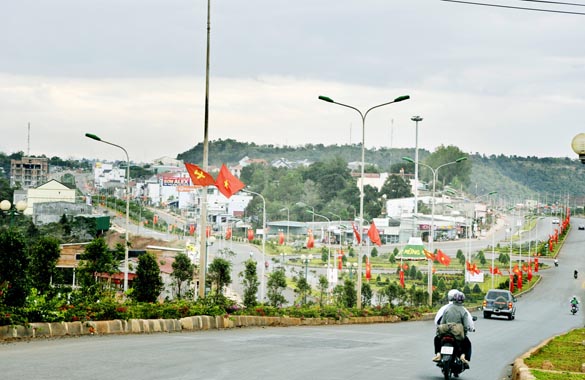
The province borders Cambodia to the west and thanks to its strategic geographical position, distinct cultural diversity and bountiful natural resources it offers tremendous potential to investors and is key in advancing socio-economic development.
Agricultural development potential
The province covers more than 650,000 hectares with over 90 per cent earmarked for agriculture. Fertile basalt soil covers 60.3 per cent of the total area, concentrated primarily in Dak Mil, Tuy Duc and Dak Song district. Grey soil makes up another 28.2 per cent of the province’s total area, proportionally spread throughout.
Vast fertile land and ample water sources are ideal to the development of long-term and annual cash crop areas, as well as diverse agricultural production.
Dak Nong is also conducive to aquaculture development with more than 1,000ha of lakes, rivers and other water areas. The growing presence of hydropower plants with large water reservoirs could also be tapped to increase aquaculture output.
To effectively tap its enormous potential, the province has enacted wide-ranging policies and programmes to push forward hi-tech agriculture and has developed a system of hi-tech agricultural zoning.
Due heed has been paid to developing cash crops such as coffee, pepper, cocoa and an assortment of fruits and vegetables through scientific and technological processes to promote local specialty products and priority investment areas.
Industrial development potential
As well as agriculture, Dak Nong has great potential for mining and processing industry development.
Accordingly, the province is home to 218 minable areas with 16 kinds of minerals including opal, gold, gems, zinc and wolfram. Perhaps most notable is a huge bauxite deposit of around 3.4 billion tonnes of raw ores.
Dak Nong also offers numerous advantages for bolstering processing industry development. The annual production output of long-term cash crops such as coffee, cocoa, pepper, cashews, and tea, as well as annual cash crops such as corn, sweet potatoes and cassava now amounts to several hundred million tonnes.
This massive output contrast the province’s still under-developed processing industry, which has resulted in low added value. This field therefore still offers numerous opportunities to investors.
In terms of industrial production, most businesses based in Dak Nong are miniscule, use outdated technology, and lack in quality human resources.
Presently the province is home to only one operational industrial park and six industrial clusters and parks are either in the site clearance phase or under construction, which is presenting a number of challenges to the province’s industrial development but great opportunities to investors.
Trade-services development potential
Since Dak Nong is a southwest gateway to the Central Highlands, it links localities in the region to the southern key economic zone and south-central coastal region and accommodates two border gates (Dak Per in Dak Mil district and Bu Prang in Tuy Duc district). This gives it tremendous advantages in terms of trade and the service industry.
The current infrastructure system for trade-service development, however, is still fledgling and modern trade models such as supermarkets and first-level general sales agents are still absent from the province. Therefore, calling for investment into supermarkets, wholesale markets and associated services is a priority set by provincial authorities.
Tourism development potential
Dak Nong is proud of its distinct cultural and historic traditions. It is home to 40 ethnic groups with their unique characteristics.
The area is also home to imposing natural landscapes. Vast green fields lead into endless aged forests. It features a plethora of lakes and waterfalls unique only to the province.
The province is also home to the Nam Nung and Ta Dung nature reserves that are rich in fauna and flora, many of which are listed in Vietnamese and global red books.
As well as national highways 14, 14C and 28, linking Dak Nong to tourism hubs such as Ho Chi Minh City, Da Lat and Binh Thuan, the province has two border gates connecting to Cambodia, which makes it ideal for regional and national tourism.
Education-training development potential
Dak Nong is home to a population of 550,000, over 60 per cent of which are of Vietnam’s majority Kinh group and the rest ethnic minorities. 60 per cent of the population is of working age, but only 32.5 per cent are trained workers.
The province still lacks a college or university, so the demand for training is huge. Calls have been made for investment into building vocational schools and universities to serve local demand. Another priority is building a kindergarten system.
Orientations in attracting investment and promoting economic development
Economic restructuring and improving the quality of growth are two of the major issues in Dak Nong, similar to many other areas in Vietnam. The province has set out a socio-economic development master plan with a vision towards 2020.
Accordingly, it set a goal of average GDP growth of 15.5 per cent for the 2011-2015 period, and 16-17 per cent for 2016-2020. The local economic structure is being geared towards an increased proportion of industry and services.
By 2015, industry-construction is expected to cover 39.57 per cent of the economy, followed by agriculture-forestry at 33.7 per cent and services at 26.73 per cent. By 2020 industry-construction is planned to make up 45.7 per cent of the economy followed by services at 37.6 per cent and agriculture-forestry 16.5 per cent.
Moreover, per capita income is targeted at VND66 million ($3,140) by 2020. Export value is expected to reach $550 million by 2015, increasing nearly 16.2 per cent each year between 2011 and 2015 and $1.5 billion by 2020, to grow by an average 22.2 per cent in the 2016-2020 period.
To realise its socio-economic development plans, the province has worked on a well-conceived strategy to attract investment. Accordingly, the province has prioritised luring eco-friendly and technology intensive projects, particularly hi-tech agriculture, tourism (eco-tourism), and mining linked to comprehensive, environmentally friendly processing, agricultural processing and support industry.
Dak Nong has also implemented numerous incentives to support investors and push forward a one-stop shop mechanism to facilitate investment.
Efforts will centre on upgrading infrastructure on a selective basis and introducing a specific mechanism to support firms engaged in infrastructure development. The public-private partnerships (PPP) model has been emphasised to mobilise capital from a wide range of stakeholders.
Finally, the province will scale up efforts for hosting and increasing engagement in diverse investment promotion events and co-operative programmes at home and abroad. Dak Nong will also take the initiative in sourcing potential investors and partners to effectively serve the province’s socio-economic development needs.
vir


